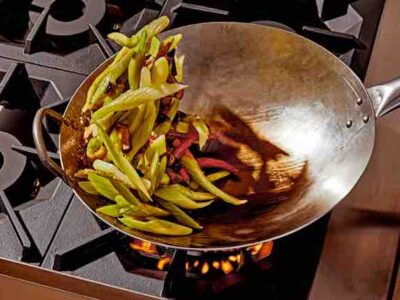In the U.S., Jan. 30 is recognized as National Croissant Day. By definition, it is a crescent-shaped French pastry that is flaky on the outside and soft on the inside. The French word for crescent is “croissante” or “croissant,” alluding to the food’s appearance. However, the origin of the delicacy can be traced to 13th-century Austrian pastries called “kipferls.”
Origin Story
Between 1837 and 1839, two Austrian-born bakers named August Zang and Ernest Schwartzer operated a bakery in Paris called La Boulangerie Viennoise. Many historians consider the store to be the prime origin of the croissant in France. It offered Austrian pastries like kipferl, which was wildly popular with their Parisian customers. Other shops began to create their interpretations, but it wasn’t until the early 20th century that the version we know and love today was born.
The French put their spin on the food with puffed pastry, which created an airer, crispier version of the Austrian kipferls.
Many culinary experts and historians point to the addition of puffed pastries as the definitive moment for modern-day croissants.
Since then, two specific types have become wildly popular: buttered croissants (croissants au buerre) and ordinary croissants (croissants ordinaires). The buttered version is more expensive than their “ordinary” counterparts, and they don’t have the signature crescent shape. The ordinary category is made with cheaper ingredients like margarine and does dawn the crescent shape.
Myths and Legends
Whether it’s the infamous “dropped my croissant” meme or the immediate association with France, the pastry is an iconic culinary symbol with tons of different myths and legends about them worth mentioning.
Some people believe that they were invented by a Hungarian baker when the Ottoman Turks attacked Budapest in 1686. Legends claim the baker discovered Turks tunneling under the city and that he was rewarded by getting to create a special pastry to commemorate the victory. However, this story was first circulated in the late 1900s, and no official mentions or records can be found in historical accounts.
Another popular myth surrounding the airy treats is that Marie-Antoinette, an Austrian princess, popularized them by bringing kipferls to France when she married Louis XVI in 1770.
In reality, there were no written references to the Austrian delicacy or croissants in France until decades after her death, meaning this myth is simply that, a myth.
Moving away from myths, here’s a simple fact: approximately 142.30 million Americans consumed croissants in 2020. That means that less than half of Americans enjoyed the crisp yet airy crunch of the famous pastry. So, go out and enjoy one this Jan. 30 — you can even invite a friend to raise our consumption numbers.





